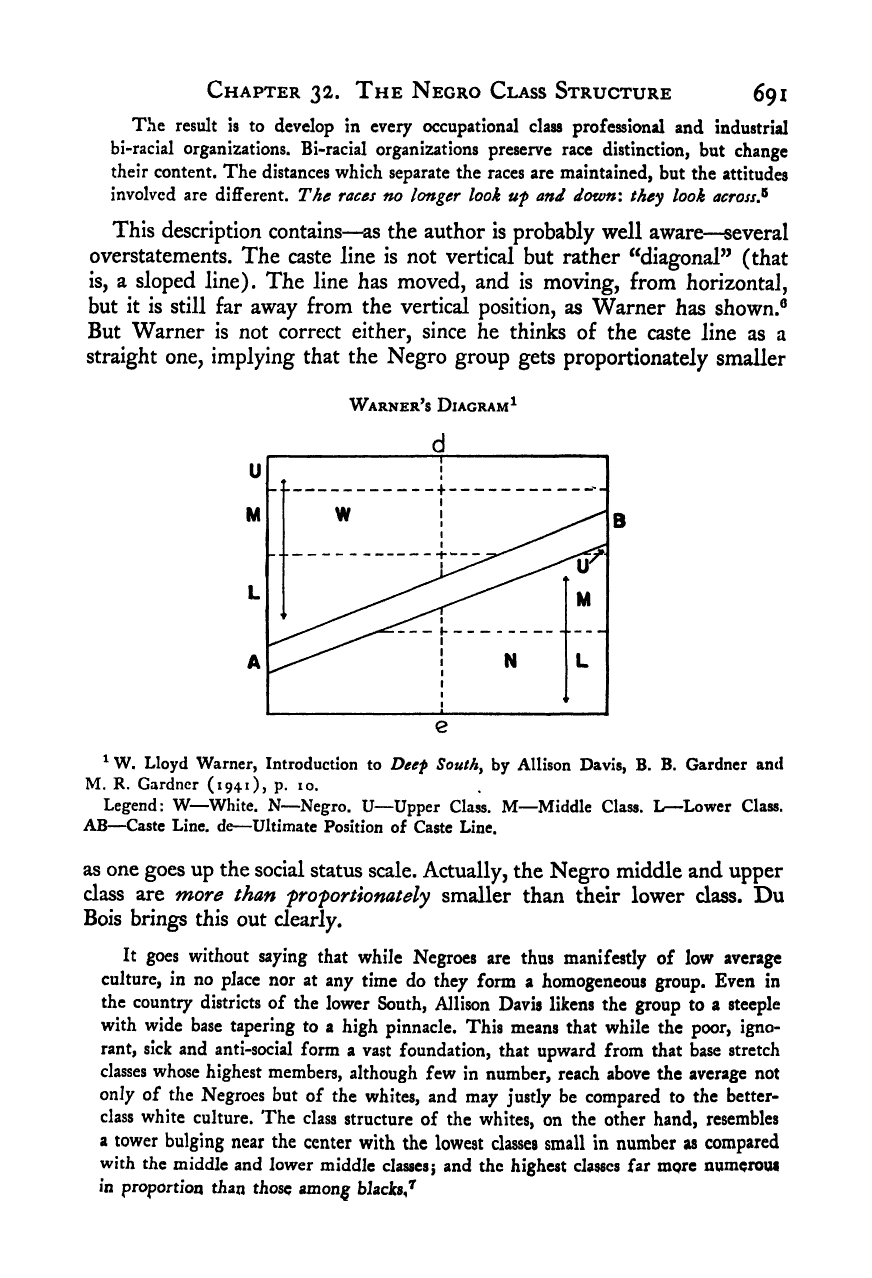Note: Gunnar Myrdal died in 1987, less than 70 years ago. Therefore, this work is protected by copyright, restricting your legal rights to reproduce it. However, you are welcome to view it on screen, as you do now. Read more about copyright.
Full resolution (TIFF) - On this page / på denna sida - VIII. Social Stratification - 32. The Negro Class Structure - 1. The Negro Class Order in the American Caste System

<< prev. page << föreg. sida << >> nästa sida >> next page >>
Below is the raw OCR text
from the above scanned image.
Do you see an error? Proofread the page now!
Här nedan syns maskintolkade texten från faksimilbilden ovan.
Ser du något fel? Korrekturläs sidan nu!
This page has never been proofread. / Denna sida har aldrig korrekturlästs.
Chapter 32. The Negro Class Structure 6gi
The result is to develop in every occupational class professional and industrial
bi-racial organizations. Bi-racial organis^ations preserve race distinction, but change
their content. The distances which separate the races are maintained, but the attitudes
involved are different. TAe races no longer look uf and down\ they look across,^
This description contains—^as the author is probably well aware—several
overstatements. The caste line is not vertical but rather ^^iagonal” (that
is, a sloped line). The line has moved, and is moving, from horizontal,
but it is still far away from the vertical position, as Warner has shown.®
But Warner is not correct either, since he thinks of the caste line as a
straight one, implying that the Negro group gets proportionately smaller
Warner’s Diagram^
^ W. Lloyd Warner, Introduction to Deef Souths by Allison Davis, B. B. Gardner and
M. R. Gardner (1941), p. lo.
Legend: W—White. N—Negro. U—Upper Class. M—Middle Class. L—Lower Class.
AB—Caste Line, de—Ultimate Position of Caste Line.
as one goes up the social status scale. Actually, the Negro middle and upper
class are more than frofortionately smaller than their lower class. Du
Bois brings this out clearly.
It goes without saying that while Negroes are thus manifestly of low average
culture, in no place nor at any time do they form a homogeneous group. Even in
the country districts of the lower South, Allison Davis likens the group to a steeple
with wide base tapering to a high pinnacle. This means that while the poor, igno-
rant, sick and anti-social form a vast foundation, that upward from that base stretch
classes whose highest members, although few in number, reach above the average not
only of the Negroes but of the whites, and may justly be compared to the better-
class white culture. The class structure of the whites, on the other hand, resembles
a tower bulging near the center with the lowest classes small in number as compared
with the middle and lower middle classesj and the highest classes far more numerous
in proportion than those among blacks
<< prev. page << föreg. sida << >> nästa sida >> next page >>